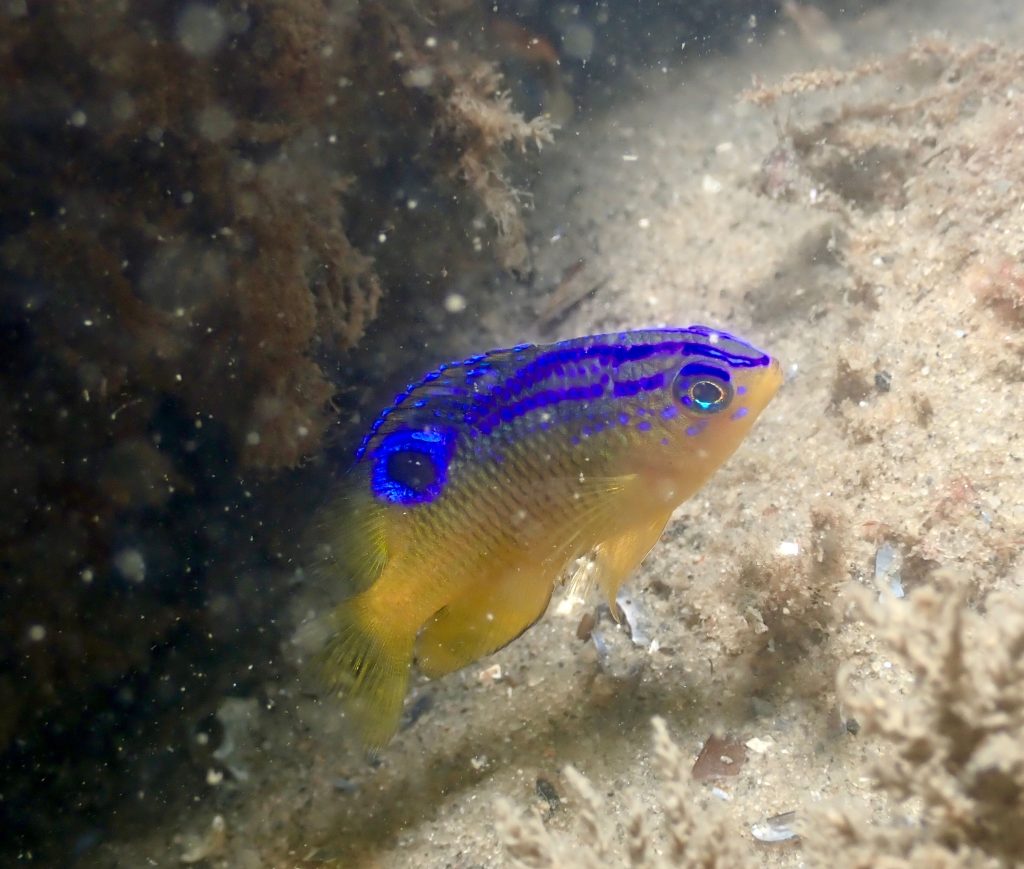
Yellowtail reef fish by Chris Paparo
It’s been a while since I’ve posted a Long Island fish collecting update, largely because I no longer live there. But 2023 is turning out to be a special year for the tropical strays that spend a fleeting month or two in the waters of the northeastern US before they migrate or die in response to the inevitable drop in water temperature. I know this because I continue to live vicariously through several of my friends who are still there and share their experiences with me. It’s not entirely clear why some years turn out to be so spectacular for tropical diversity in Long Island waters, while other years turn up little more than the standard spotfin butterflies, gag groupers, and bicolor damselfish, but surely it has to do with the timing and success of spawning events further south and how they line up with masses of water that eventually end up there.
Judging by the reports and photos I’m seeing, 2023 is turning out to be the most interesting year for tropical strays that we have seen in at least a decade. Post larval French and blue angelfish started showing up several weeks ago. These are always the most sought-after species among tropical fish collectors and underwater photographers. There is just something about seeing those brilliant colors against the drab backdrop of a temperate benthic environment. But what really got my attention this year, is the appearance of a couple of new species for New York State, which I believe are probably range records.
Two weeks ago, my friend Chris Paparo, the manager of the Stony Brook University Marine Lab, sent me a video of a little damselfish he had taken at the Ponquogue Bridge in Hampton Bays, NY. At first glance, it appeared to be one of two relatively common visitors to Long Island waters: The beaugregory, Stegastes leucostictus, or the cocoa damselfish, Stegastes variabilis. As juveniles, they both exhibit a bright blue head and upper body, with a bright yellow tail and ventral surface. The two can be distinguished from each other by the presence of a black spot on the caudal peduncle of the cocoa damsel. But as I looked more closely at Chris’ video, I noticed that the distribution of yellow was different on this fish and it also had a slightly different shape. It turned out to be a yellowtail reef fish, Chromis enchrysura. This was especially exciting because as far as I know, no Chromis species has ever been recorded from this far north in the Western Atlantic.
Then, two days ago, my friend Harris Moore, an avid diver/photographer and former intern of mine at the Long Island Aquarium, posted some photos from another dive on the Ponquogue Bridge. The tropical diversity was very impressive and there was another range extension in the mix. This time it was Stegastes diencaeus, the longfin damsel.

Longfin damsel by Harris Moore
Although it’s tempting to point to climate change as a reason for these range extensions, it’s important to remember that these tropical species have been showing up far outside of the tropics for as long as the Gulf Stream has been sending water north from the equatorial Atlantic, and for the most part, they stand no chance of surviving at these high latitudes. There are of course some exceptions. Groupers, jacks, and a few others are capable of migrating back to suitable habitats before winter sets in and there is evidence that some of these fishes have begun to incorporate this journey into their life cycles.
- Lionfish Photo by Harris Moore
- Yellowtail Snapper by Harris Moore
- French angel by Harris Moore
I don’t often feel homesick for my native Long Island, but hearing about this year’s tropical influence has me really missing the underwater world of the Northeast.













0 Comments